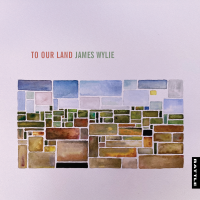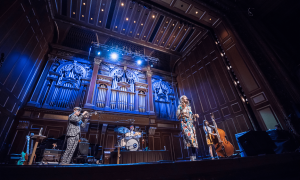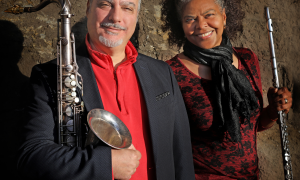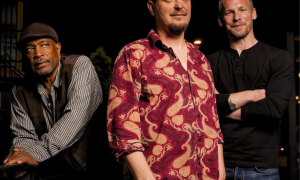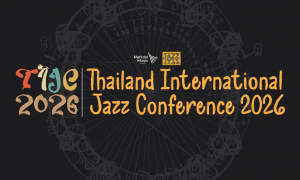Max Steiner's application of music at a critical moment in “Gone With the Wind" can be compared to Wagner's use of Siegfried's funeral music late in “Gotterdammerung."
Max Steiner, the pioneering film composer who wrote the music for “King Kong" and “Gone With the Wind," was once complimented as the man who invented modern movie music.
“Nonsense," he replied. “The idea originated with Richard Wagner. Listen to the incidental scoring behind the recitatives in his operas. If Wagner had lived in this century, he would have been the No. 1 film composer."
That last point is debatable. (Try to imagine Wagner working for Harvey Weinstein.) But Wagner's influence on film-music history certainly has been enormous, “probably more than any other single composer," says Roger Hickman, professor of music at California State University Long Beach and author of “Reel Music: Exploring 100 Years of Film Music."
Wagner's 19th century music dramas, notably his “Ring" cycle, combined literature, visual elements and dramatic music in ways that would anticipate cinema's fusion of the visual and aural arts a few decades later, adds Jeongwon Joe, associate professor of musicology at the University of Cincinnati and co-editor of the essay collection “Wagner & Cinema." “Early composers and accompanists [in the silent era] openly acknowledged the influence of Wagner," she says.
John Mauceri, who as founding director of the Hollywood Bowl Orchestra conducted plenty of film music and who during his eight years with Leipzig's Gewandhaus Orchestra also conducted plenty of Wagner says that two aspects of Wagner's musical universe “are as operative today as they were when he invented and developed them. One was how to tell, in musical terms, a dramatic story over a long period of time; and the other was how music should describe natural events as well as emotional states, in very specific translations of what we see and feel," Mauceri says by phone from North Carolina, where he is chancellor of the University of North Carolina School of the Arts.
Central to Wagner's theory of dramatic storytelling was the leitmotif (although he appears to have disdained the term), in which a recurring musical theme would be associated with a person, place or idea. “This idea was adopted by every film composer who came to Hollywood to write dramatic underscore, starting with Steiner and Erich Wolfgang Korngold, right through to today," Mauceri notes.
He compares Steiner's application of music at a critical moment in “Gone With the Wind" to Wagner's use of Siegfried's funeral music late in “Gotterdammerung." Both, he says, take advantage of the power of memory: “As the body of Siegfried is being carried up the hill, through the mist, as the scene changes, we hear a series of recapitulations in which we as audience members go through the whole story to this point without a word being spoken."
Steiner uses similar tactics in the 1939 film classic, Mauceri says, citing the scene halfway through the film when a starving Scarlett O'Hara (Vivien Leigh) wanders the fire-ravaged land and swears “I'll never be hungry again." Steiner evokes her father's credo that land is all that matters by playing the Tara theme that opened the film and which represents the family estate.
Underscoring Richard Wagner's Influence on Film Music
You may not know his 'Ring,' but if you've seen 'Lord of the Rings' or 'Star Wars' you've entered his musical universe.






